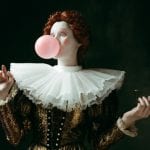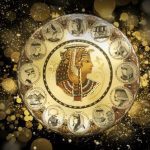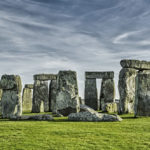 Crime
Crime  Crime
Crime  Technology
Technology 10 Hilariously Over-Engineered Solutions to Simple Problems
 Miscellaneous
Miscellaneous 10 Ironic News Stories Straight out of an Alanis Morissette Song
 Politics
Politics 10 Lesser-Known Far-Right Groups of the 21st Century
 History
History Ten Revealing Facts about Daily Domestic Life in the Old West
 Weird Stuff
Weird Stuff 10 Everyday Products Surprisingly Made by Inmates
 Movies and TV
Movies and TV 10 Actors Dragged out of Retirement for One Key Role
 Creepy
Creepy 10 Lesser-Known Shapeshifter Legends from Around the World
 Animals
Animals 10 Amazing Animal Tales from the Ancient World
 Gaming
Gaming 10 Game Characters Everyone Hated Playing
 Crime
Crime 10 Terrifying Serial Killers from Centuries Ago
 Technology
Technology 10 Hilariously Over-Engineered Solutions to Simple Problems
 Miscellaneous
Miscellaneous 10 Ironic News Stories Straight out of an Alanis Morissette Song
Who's Behind Listverse?

Jamie Frater
Head Editor
Jamie founded Listverse due to an insatiable desire to share fascinating, obscure, and bizarre facts. He has been a guest speaker on numerous national radio and television stations and is a five time published author.
More About Us Politics
Politics 10 Lesser-Known Far-Right Groups of the 21st Century
 History
History Ten Revealing Facts about Daily Domestic Life in the Old West
 Weird Stuff
Weird Stuff 10 Everyday Products Surprisingly Made by Inmates
 Movies and TV
Movies and TV 10 Actors Dragged out of Retirement for One Key Role
 Creepy
Creepy 10 Lesser-Known Shapeshifter Legends from Around the World
 Animals
Animals 10 Amazing Animal Tales from the Ancient World
 Gaming
Gaming 10 Game Characters Everyone Hated Playing
Ten Mysterious Messages Hidden in Renaissance Artwork
Something about Dan Brown’s The Da Vince Code brought out the super sleuth in all of us. There are several Renaissance-era paintings that supposedly have hidden messages within the layers of oil paint. So, how do you know whether or not some of these messages are really there? Well, that’s up to you. But we’re breaking down the top ten to help you decide.
Related: Top 10 Freaky Urban Legends Hidden In Songs
10 UFO and Madonna
The painting Madonna with Saint Giovannino is a 15th-century altarpiece by Domenico Ghirlandaio, installed at the Palazzo Vecchio. The painting portrays the Madonna with the infant Jesus and Saint John. However, the painting has been at the center of a UFO conspiracy theory for years due to a blurry circle next to Madonna’s head that many theorists believe is an alien aircraft. The painting has such a reputation that many refer to it as “Madonna dell’UFO.”
But despite the controversy, no one has figured out what the blurry circle actually represents.
The blurry circle is oval-shaped and emits bright beams of light, which some people believe is a flying saucer. And the figures of a man and a dog are depicted looking up at the object. Some UFO theorists suggest that the Madonna has deliberately positioned herself to shield the children in her lap and that her halo, which looks vaporous, is possibly being diminished by the object in the sky.
On the flip side, the object painted by Ghirlandaio could simply be his interpretation of an angelic presence or a brilliant star. After all, celestial-looking objects in religious paintings of this time were common.
9 The Gimel in the Chapel
According to some interpretations, the figures of David and Goliath in the Sistine Chapel ceiling form the shape of the letter gimel, which symbolizes g’vurah, or strength, in the mystical Kabbalah tradition.
The Sistine Chapel ceiling is believed to be a coded message about what the pope thought was his biblically ordained destiny, and Michelangelo was chosen to encode it. The ceiling is also believed to be a “bridge” between the Roman Catholic Church and the Jewish faith, with Jewish symbols and Hebrew letters hidden in the artwork.
The authors of The Sistine Secrets: Unlocking the Codes in Michelangelo’s Defiant Masterpiece found a few shapes on the ceiling that correspond to Hebrew letters. The Sistine Chapel itself is built to the same proportions as the Holy Temple in Jerusalem, which is another famously hidden message. However, these interpretations are not universally accepted, and the meaning of the gimel in the Sistine Chapel is up to interpretation.
8 The Brain in Creation of Adam
According to a fascinating theory by Frank Lynn Meshberger, Michelangelo’s Creation of Adam depicts a human brain. The theory suggests that God’s right arm reaches out to Adam through the prefrontal cortex, the section of the brain that deals with creativity.
The reddish cloak surrounding God on the right side of the fresco resembles the sagittal section of a human brain. The theory suggests that God is bestowing Adam with the gift of the intellect and that it is by using this great gift that man may reach his highest potential and bring all things his mind develops into creation.
Two neurosurgery researchers at Johns Hopkins University found a precise depiction of the human spinal cord and brain stem in another panel, The Separation of Light from Darkness. The researchers suggest that Michelangelo embedded an image of a human brain stem in God’s throat to display his knowledge of anatomy and also sign the fresco in a unique way.
7 Music in The Garden of Earthly Delights
The Garden of Earthly Delights is a triptych painting by Hieronymus Bosch, created around the year 1500. The painting, which is on display in Madrid, is known for its many bizarre and fantastical details.
Specifically, there is a musical score tattooed on the butt of one of the tortured inhabitants of the rightmost panel that represents Hell. The notes play out a choral chant with risqué lyrics. Many believe that it’s a caution against the unending hazards of sin, as music and musical instruments are major motifs of the painting.
6 The Bread in The Last Supper
The Last Supper is a mural painting by Leonardo da Vinci, dated to c. 1495–1498. It represents the scene of the Last Supper of Jesus with the Twelve Apostles, as told in the Gospel of John. The painting depicts the moment after Jesus announces that one of his apostles will betray him.
Da Vince’s depiction is known for its symbolic references, including the bread on the table. The bread on the table is believed to be a reference to the Eucharist, which is a central Christian rite that involves eating bread and drinking wine as a symbol of the body and blood of Jesus Christ. The bread is also believed to reference the betrayal of Jesus by Judas Iscariot, who is recognized as he reaches toward a plate beside Christ. He also clutches a purse containing his reward for identifying Christ to the authorities the following day.
5 The Sistine Fig
Michelangelo painted the Tree of Knowledge with figs instead of apples. You can find it in the panel that shows the “Temptation” and the expulsion of Adam and Eve from the Garden of Eden in the Sistine Chapel.
This is a departure from the presiding thoughts in Italy at the time over what type of fruit was the forbidden one, as the Catholic Church’s official Latin translation of the Bible during the 16th century, the Vulgate, widely read the Tree of Knowledge as bearing apples. Michelangelo’s interpretation of the tree bearing figs is a more Judaic interpretation of the text.
The fig tree symbolizes knowledge, enlightenment, and fertility in many cultures, including ancient Greece and Rome. Interestingly, figs would appear again in Michelangelo’s work in the wall fresco depicting the “Last Judgment.” One of the nude figures is holding a fig leaf over his genitals.
4 Mary in The Last Supper
There are several conspiracy theories about the figure of Mary in the painting The Last Supper by Leonardo da Vinci. One of the most popular is that the figure sitting on the right side of Jesus is not the disciple John, as it is commonly believed, but Mary Magdalene. This theory was popularized by Dan Brown’s novel The Da Vinci Code and has been widely debated by art historians and scholars.
The theory suggests that Mary Magdalene was not only a disciple of Jesus but also his wife and that the painting is a coded message about their relationship. The figure in the painting has feminine features like long hair and delicate hands. Some people believe that this is a deliberate choice by Leonardo to represent the feminine aspect of the divine and to challenge the traditional patriarchal view of Christianity. However, most experts reject this theory, arguing that the figure is just a portrayal of John.
3 Salvator Mundi
The orb in the painting Salvator Mundi by Leonardo da Vinci has been the talk of the art world for centuries. Da Vince painted Christ holding a crystal orb in his left hand, symbolizing the earth. It’s a key element of any composition featuring the “Salvator Mundi,” which is Latin for “Savior of the World.”
But why doesn’t the orb magnify and invert the material behind it, as it should if it were solid glass? Some art historians have proposed several explanations. Walter Isaacson argued that Leonardo deliberately depicted the orb inaccurately, though he also suspected the orb was hollow. Martin Kemp attributed the anomaly to small cavities found in some types of rock crystal and calcite.
A group of computer scientists at the University of California, Irvine, also claimed that the glass orb is hollow. They used imaging software to produce a digital, three-dimensional copy of Salvator Mundi and studied how light would pass through various orb types. They estimated that the glass of the orb in the painting was very thin. If the orb is hollow rather than solid, the painting would be true to life. However, the sphere’s appearance might still be an artistic choice.
2 The Mona Lisa
Some experts claim that there is a hidden code in the eyes of the Mona Lisa. Supposedly, tiny letters and numbers are hidden in her pupils that you can only see with a magnifying glass. The letters “L” and “V” are visible in the left eye, while the letters “C” and “E” (or the letter “B”) are visible in the right eye.
Others say the painting contains a hidden number “2,” revealed by adding up the letters “LVCE.” Some believe these letters and numbers could reveal the model’s identity or a secret message.
Or the letters and numbers are simply the result of the painting’s aging process.
1 Virgin of the Rocks
The cave setting in Madonna on the Rocks by Leonardo da Vinci represents the contrast between the physical world and the spiritual world. The painting displays the Virgin Mary with the infant Jesus and John the Baptist in a rocky landscape, symbolizing how temporary and harsh the physical world is. On the other hand, the figures are depicted in a serene and otherworldly manner, which suggests their connection to the spiritual world.
The cave also represents the idea of hidden knowledge and secrets. The painting is known for its use of chiaroscuro, which creates a sense of mystery and depth in the cave setting. The figures suggest that they guard a secret or hidden knowledge. The rocky landscape and the cave setting also represent the idea of the wilderness and the desert. This is a common theme in Christian art, showing the wilderness as a place of spiritual testing and purification.








